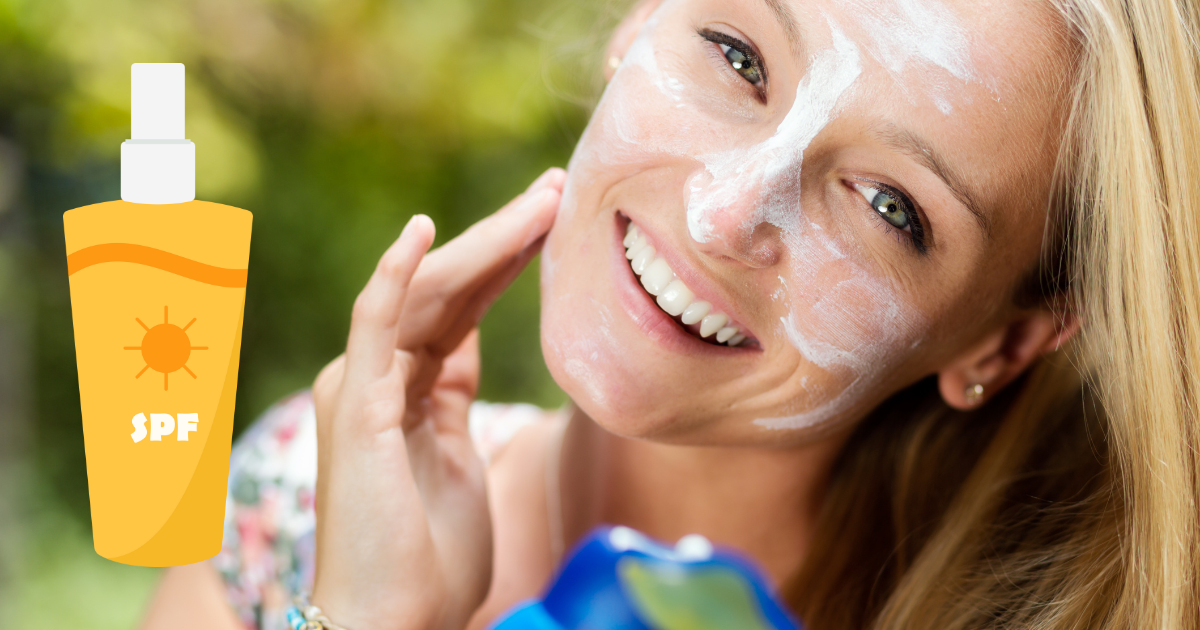From the best time to apply sunscreen to whether a beach umbrella truly protects you, scientific research offers clear answers about staying safe in the sun.
On hot and humid summer days, sunscreen isn’t just a skincare product — it’s an essential layer of protection. Yet, despite its importance, sunscreen is surrounded by countless myths. Some are spread by wellness influencers promoting “natural alternatives,” while others come from surprising sources or have simply become accepted as common knowledge.
But what does SPF (sun protection factor) really measure? Is it true that only UVA rays cause skin aging while UVB is responsible for burns? And do you really need to wait 20 minutes after applying sunscreen for it to start working?
Here’s what the science — and top dermatology experts — actually say about sunscreen myths, skin safety, and how to protect yourself the right way.
#1Myth 1: SPF 50 Doesn’t Mean You Can Stay in the Sun 50 Times Longer
A common misconception is that SPF 50 allows you to spend 50 times longer in the sun without burning. That’s not true. According to the U.S. Food and Drug Administration (FDA), SPF does not measure time. It doesn’t mean if you normally burn in one hour, an SPF 8 sunscreen will let you last eight hours.
Instead, SPF (Sun Protection Factor) is a ratio: the amount of UV radiation needed to cause sunburn on protected skin compared to unprotected skin. For example:
SPF 25 lets in about 4% of UV rays (blocks 96%).
SPF 50 lets in about 2% of UV rays (blocks 98%).
This means higher SPF offers stronger protection, but it’s not infinite — and real-life results are often less effective than lab conditions. Why? Because SPF is tested with sunscreen applied thickly (2mg/cm² of skin), far more than most people actually use.
👉 To stay protected:
Reapply every two hours, and always after swimming or sweating.
Choose a broad-spectrum sunscreen that protects against both UVB (burning) and UVA (aging, long-term damage).
In the UK, check the UVA star rating (five stars = best protection).
#22. UVA doesn't just cause ageing and UVB sunburn – they can both cause cancer
The spectrum of UV light can be broken down into smaller bands of different wavelengths. UVA has a longer wavelength that can penetrate the skin more deeply, while UVB waves are slightly shorter and only penetrate the outer layers of the skin. However, this doesn't mean that UVB doesn't cause deeper damage.
It was long thought that UVB was the main cause of skin cancer, but in recent decades research has indicated that damage caused by UVA may also lie behind the development of skin cancers. This has led to sunscreen formulations that block both types of UV radiation.
When either form of UV hits the skin, the skin's cells respond by releasing mediators like cytokines – which cause inflammation deeper down, contributing to long-term damage, ageing and cancer risk, says Antony Young, professor emeritus of experimental photobiology at King's College London and a lifelong researcher of sunscreen efficacy.
Both UVB and UVA also contribute to ageing and to tanning, says Mary Sommerlad, a consultant dermatologist based in London and a spokesperson for the British Skin Foundation, a UK health charity. In fact, she says, if she has a patient with a condition like melasma, where there are darker patches of skin, she tells them they need to protect themselves from the broad UV spectrum – UVA included – because UVA will "drive the darkening of the skin", she says.
#33. Yes, you can get burnt on a cloudy day
Many of us skip the hat and sunscreen when we see cloud cover. But that may be a bad idea.
This is because, while clouds do scatter radiation from the Sun, the impact on surface-level UV radiation levels can vary hugely. Very thick clouds can attenuate around 99% of the UV radiation that reaches the Earth's surface, but thinner cloud cover or scattered clouds might have no effect at all. Some types of cloud formations can mean that even more UV radiation reaches the ground in some spots than on a clear day.
#44. Not All Shade Offers Equal Sun Protection
When it comes to sun safety, the UV index is the real number to watch. Just like checking the weather forecast, the UV index tells you how intense UV radiation is. When it hits 3 or higher, experts recommend sunscreen, protective clothing, and seeking shade. But here’s the catch: not all shade is created equal.
Take the classic beach umbrella. While it feels protective, it only blocks direct rays from above, leaving your skin exposed to scattered light from the surrounding sky. Research shows that using just an umbrella provides only about the equivalent of SPF 5—and in one study, 78% of people under umbrellas still got sunburned, compared to 25% of those using sunscreen.
Other weak sources of shade include verandas or grandstands that still let sunlight in at an angle. On the other hand, dense tree canopies—like a thick oak—can give you protection closer to SPF 20, though many trees only offer SPF 5 or less.
And don’t forget about reflected UV radiation. Sand, water, glass, and even concrete can bounce rays back onto your skin, adding to your exposure even if you’re technically “in the shade.”
#55. Do You Really Need Sunscreen Year-Round?
The answer: it depends on where you are and what you’re doing.
According to the World Health Organization, when the UV index is below 2, the risk of UV damage is minimal. For many regions, that means sunscreen isn’t necessary all year long. For example, in the UK, the UV index stays under 3 from mid-October to mid-March. During this period, a full day outdoors is equal to less than one minute of peak summer sunbathing exposure. As Professor Brian Diffey bluntly puts it: “If it’s gloomy, raining, and December—you’re doing yourself no favors by putting on sunscreen.”
But context matters. In snowy environments, UV exposure can jump by 60% or more due to reflection—so skiers and snowboarders still need sunscreen in winter. Also, UV levels can change fast: clouds can lift suddenly, exposing you to higher UV than expected. This means that while you can relax a bit in winter, you shouldn’t skip sunscreen on bright, reflective, or high-altitude days.
#66. Myth: Mineral Sunscreens Only Work If You Can See Them
A common misconception is that mineral sunscreens must leave a visible white cast on the skin to be effective. While mineral-based formulas often appear white because they reflect part of the visible light spectrum, this has nothing to do with their ability to block harmful UV rays.
In reality, mineral sunscreens primarily absorb UV radiation, reflecting or scattering only about 5% of UV rays. Their effectiveness comes from protecting the skin against UVA and UVB rays—the only ultraviolet spectrums that reach the Earth’s surface and cause skin damage, premature aging, and skin cancer. So, even if a mineral sunscreen isn’t visibly “reflective,” it’s still working to keep your skin safe.
#77. Myth: Sunscreen Use Causes Vitamin D Deficiency
Another popular myth is that using sunscreen regularly will make you vitamin D deficient. While it’s true that our bodies produce vitamin D3 when exposed to UVB rays, research shows that sunscreen use doesn’t significantly affect vitamin D levels.
Most people don’t apply sunscreen thickly or often enough to block 100% of UVB exposure. In fact, you’re still getting more sun exposure than you think, even with daily sunscreen use. Studies also show that sunscreen users are no more likely to be vitamin D deficient than those who don’t use it, especially in sunny climates.
For people with lighter skin, it often takes just a few minutes of sun exposure on a clear summer day to trigger vitamin D synthesis and reach peak levels. Beyond that point, more sun doesn’t mean more vitamin D—instead, it only increases DNA damage and the risk of skin cancer.
#88. Sunscreen Doesn’t Need 20 Minutes to “Activate”
Many sunscreen labels recommend applying it 15–20 minutes before sun exposure. But that doesn’t mean sunscreen isn’t working right away. Research shows that most sunscreens are effective immediately after application. The waiting period is mainly to allow the formula to dry into a smooth, protective layer that’s less likely to rub off, sweat off, or wash away, explains Michelle Wong, chemist and author of The Science of Beauty.
In fact, one small study found that this protective film formed in as little as eight minutes. Still, it’s always best to follow the manufacturer’s directions to ensure maximum sun protection.
#99. Darker Skin Still Needs Sunscreen
It’s a common myth that people with darker skin tones don’t need sunscreen. While higher levels of melanin do provide some natural defense against UV rays, they don’t make skin immune. People with darker complexions can still experience sunburn, skin damage, and even skin cancer.
Dermatologists also point out that UV exposure can lead to hyperpigmentation issues like melasma, which disproportionately affects darker skin. That’s why experts such as Dr. Sommerlad stress the importance of sunscreen for all skin tones—because everyone needs protection from harmful UV radiation.
#1010. No, Sunscreen Is Not Causing Skin Cancer Rates to Rise
Yes, melanoma rates have been increasing among fair-skinned people in countries like the U.S., U.K., and Australia. But sunscreen isn’t to blame. The truth is, cancer rates often rise in aging populations — and these countries are getting older. Add to that decades of tanning beds, beach culture, and frequent sunburns, and you have the real culprits behind higher skin cancer numbers.
Research backs this up: an Australian study found that nearly two-thirds of melanomas — and almost all basal and squamous cell carcinomas — come directly from UV exposure. Similarly, a Swedish study on melanoma cases from 1960 to 2004 revealed that tumors were most common on sun-exposed areas like the torso and limbs in people under 70. The evidence is clear: UV radiation is the driving force.
So if you care about your health and longevity, one of the smartest things you can do is protect yourself from sunburn. That means sunscreen, shade, and smart habits in the sun.
The only indirect way sunscreen might play a role? Behavior. As dermatologist Brian Diffey explains: “When people put on sunscreen, they often feel untouchable — like they’ve got an invisible shield — and that can lead them to stay out in the sun longer than they should. But sunscreen itself is not carcinogenic.”
👉 Bottom line: Sunscreen is not the enemy. UV exposure is. Protect your skin, and you protect your future.






